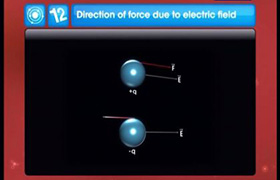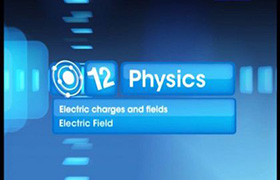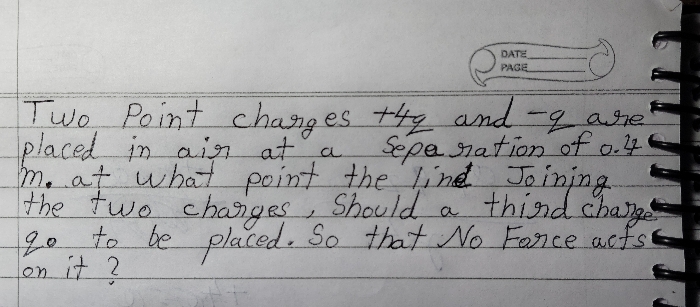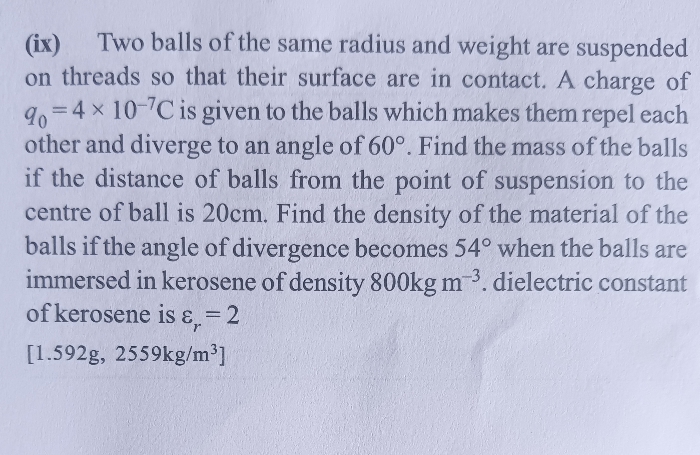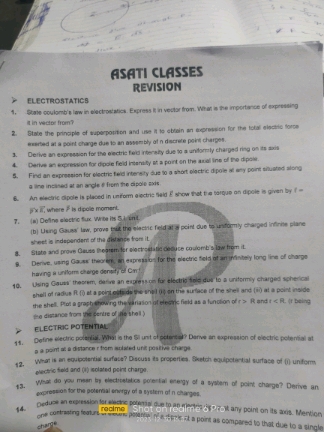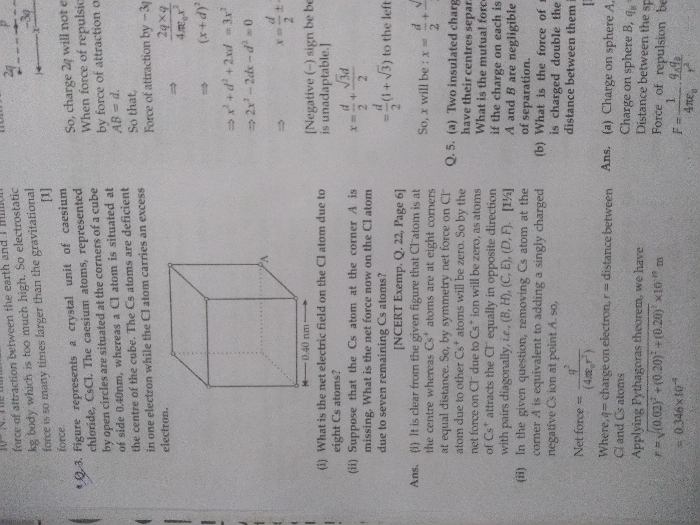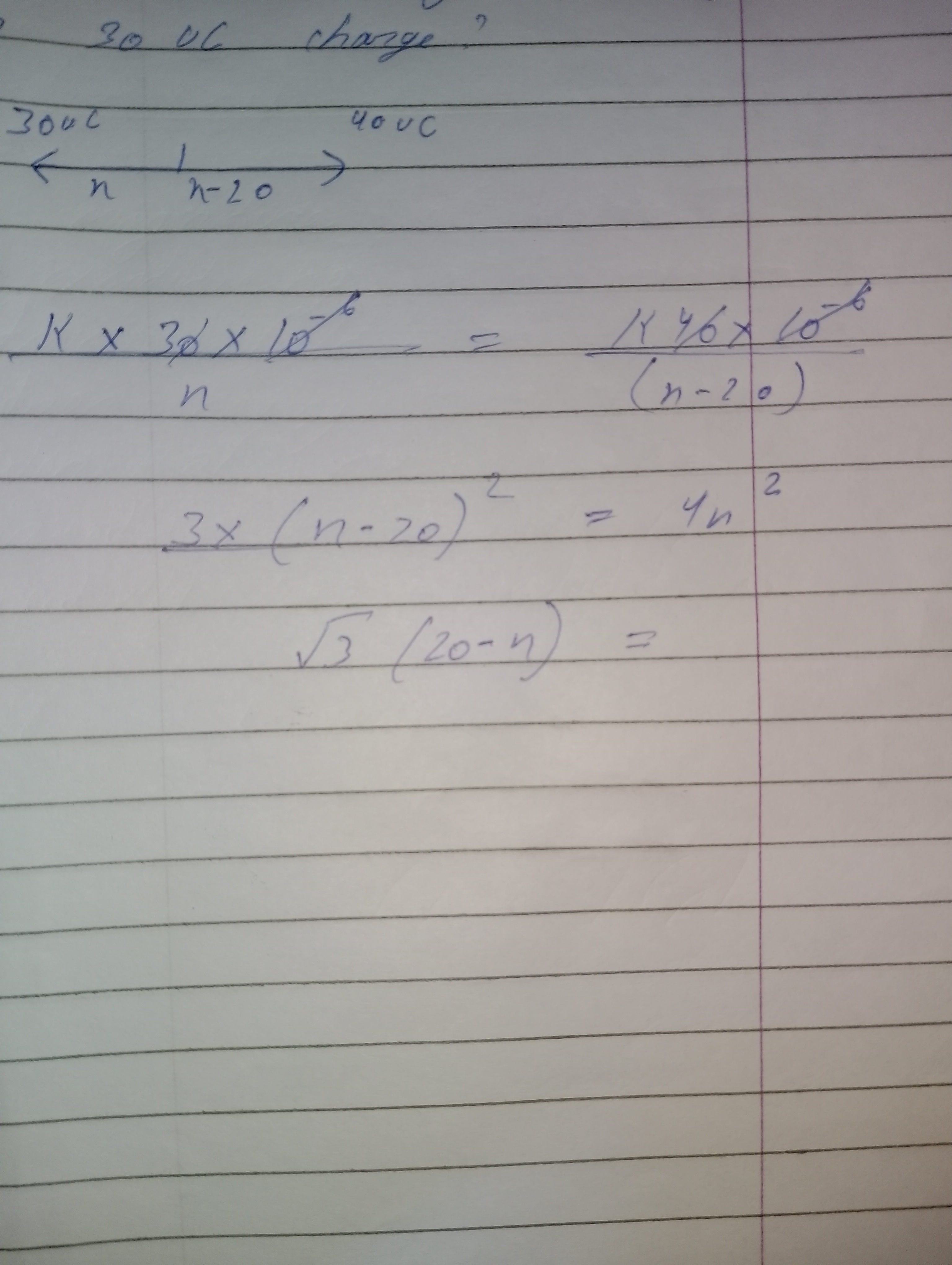CBSE Class 12-science Answered
Two point charges 2 C and 3 uC are placed at two comers of an equilateral triangle of side 20 cm in free space. Calculate the magnitude of resultant electric field at the third corner of the triangle. If an & - particle is placed at the third corner, what is the force acting on it? (Charge on & – particle is 3.2 x 10-19 €).
Asked by vedhachethan | 19 Sep, 2021, 13:20: PM
It is assumed the point charges are 2 μC and 3 μC .
Particle placed at third vertex is α particle of charge 3.2 × 10-19 C
-------------------------------------
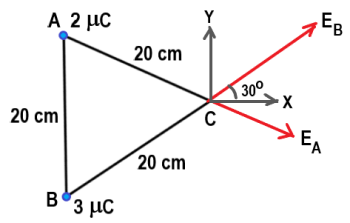
Figure shows charge of 2 μC and 3 μC respectively at the vertex A and B of equilateral triangle .
Let us choose C as the origin of cartesian coordinate system as shown in figure.
Magnitude of electric field EA at C due to 2 μC charge at A is given as

Where K = 1/(4πεo ) = 9 × 109 N m2 C-2 is Coulomb's constant
Magnitude of electric field EB at C due to 3 μC charge at A is given as

Resultant field E due to both charge is wriiten as by consideing above fields in vector form
E = EA + EB = ( | EA | + | EB | ) cos30  + ( | EB | - | EA | ) sin30
+ ( | EB | - | EA | ) sin30 
 + ( | EB | - | EA | ) sin30
+ ( | EB | - | EA | ) sin30 
E = ( 9.743  + 1.125
+ 1.125  ) × 105 N / C
) × 105 N / C
 + 1.125
+ 1.125  ) × 105 N / C
) × 105 N / CMagnitude of Resultsant field , | E | = { 9.743 × 9.743 + 1.125 × 1.125 }1/2 × 105 N/C
Magnitude of Resultsant field , | E | = 9.808 × 105 N/C
Direction of field makes angle θ = tan-1 ( 1.125/9.743 ) = 6.6o counterclockwise from +x axis
Force experienced by α particle , F = qE = 3.2 × 10-19 × 9.808 × 105 = 3.138 × 10-13 N
Answered by Thiyagarajan K | 19 Sep, 2021, 15:22: PM
Concept Videos
CBSE 12-science - Physics
Asked by adityagalar2007 | 06 Apr, 2024, 13:06: PM
CBSE 12-science - Physics
Asked by amlanmcob | 06 Apr, 2024, 12:27: PM
CBSE 12-science - Physics
Asked by manishamunda787 | 02 Apr, 2024, 11:07: AM
CBSE 12-science - Physics
Asked by kalsichaitanya | 30 Dec, 2023, 16:08: PM
CBSE 12-science - Physics
Asked by glorialyanzaw | 13 Oct, 2023, 17:53: PM
CBSE 12-science - Physics
Asked by srishtijha944 | 15 Jul, 2022, 21:55: PM
CBSE 12-science - Physics
Asked by marshelojigas | 28 Jun, 2022, 06:46: AM
CBSE 12-science - Physics
Asked by arjunsah797 | 01 Apr, 2022, 07:31: AM

